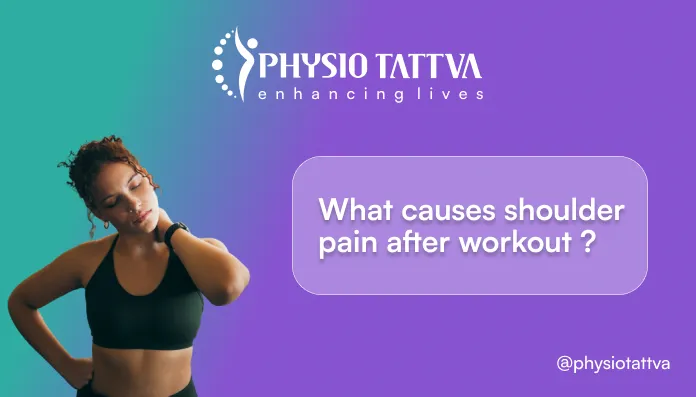Decoding Frozen Shoulder: More Than Just a Stiff Joint
To understand how to treat a frozen shoulder, it’s essential to first understand what’s happening deep inside the joint. Your shoulder joint is encased in a flexible membrane called the capsule. With adhesive capsulitis, this capsule mysteriously thickens, tightens, and becomes inflamed, forming restrictive bands of scar tissue called adhesions. This process effectively "shrinks" the capsule, dramatically limiting space and restricting movement, which causes the signature pain and stiffness.
This condition typically progresses through three stages of frozen shoulder, and identifying your phase is key to effective treatment:
- Stage 1: The Freezing Stage. Lasting from weeks to months, this initial stage is characterized by a gradual onset of shoulder pain, which often worsens at night. As the pain increases, your range of motion begins to progressively decline.
- Stage 2: The Frozen Stage. During this phase, which can last for several months, the sharp pain may begin to subside. However, stiffness becomes the dominant issue. The shoulder capsule has significantly tightened, making movement extremely difficult.
- Stage 3: The Thawing Stage. This is the recovery phase. Your range of motion slowly and gradually begins to improve. This thawing process can take anywhere from six months to two years to complete without proper intervention.
While the exact cause isn't always clear, risk factors include prolonged immobilization after an injury, surgery, diabetes, and certain thyroid disorders. An effective adhesive capsulitis treatment plan aims to manage pain and restore mobility across all three stages.
What is Cupping Therapy and How Does It Work?
You may have seen the distinct circular marks on athletes and celebrities, but what exactly is cupping therapy? It is a non-invasive therapeutic technique where a physiotherapist places special cups on your skin to create negative pressure, or suction. At Physiotattva, our trained therapists use this ancient practice as a precise clinical tool to treat musculoskeletal conditions.
The science behind its effectiveness is straightforward. The suction gently lifts the skin, fascia (the connective tissue surrounding muscles), and muscle layers. This action has several profound physiological effects:
- Promotes Vasodilation: The negative pressure causes the blood vessels in the treated area to expand, leading to a dramatic increase in blood circulation.
- Reduces Stagnation: The suction draws stagnant, deoxygenated blood and metabolic waste products from the deeper, tighter tissues up to the surface, allowing the body’s lymphatic system to clear them away more efficiently.
- Releases Fascia: Critically for a frozen shoulder, the lifting force stretches and separates adhered layers of fascia and connective tissue. This helps break down the very adhesions that are causing the stiffness and restricted movement.
Benefits of Cupping Therapy for Frozen Shoulder
When applied specifically to a frozen shoulder, cupping therapy offers tangible benefits that directly address the condition's primary symptoms. Here are the key ways this therapy can help you find relief and regain function.
Significant Pain Alleviation
One of the most immediate benefits of cupping for shoulder pain is its analgesic effect. The suction on the skin is thought to interrupt pain signal pathways to the brain. Furthermore, the increased blood flow and gentle stretching of the tissue can stimulate the release of endorphins—the body's natural pain-relieving chemicals. For patients in the intensely painful "freezing" stage, this can provide significant and welcome relief, making daily activities more bearable.
Drastic Improvement in Range of Motion
Stiffness is the hallmark of a frozen shoulder. Cupping therapy directly targets this by physically decompressing the tissues. The negative pressure lifts and separates the layers of skin, fascia, and muscle that have become glued together. This action helps to break down the dense adhesions within the shoulder capsule, loosening the "frozen" tissues. By releasing this tension, cupping helps restore plasticity to the joint capsule, making movement easier, smoother, and far less painful.
Reduction of Inflammation
Adhesive capsulitis is, at its core, an inflammatory condition. The enhanced circulation promoted by cupping therapy is vital for healing. It works like a targeted flushing system, helping to move inflammatory byproducts away from the joint capsule. Simultaneously, it delivers a fresh supply of oxygenated, nutrient-rich blood to the inflamed tissues. This process reduces swelling, calms inflammation, and provides the essential building blocks for tissue repair.
Prepares the Shoulder for Physiotherapy
Perhaps the most crucial benefit of cupping is its synergistic relationship with other physiotherapy modalities. Cupping therapy does not work in a vacuum. By reducing pain and increasing tissue pliability, it makes the shoulder joint and surrounding muscles more receptive to manual therapy and therapeutic exercise. A shoulder that is less painful and stiff is a shoulder that can be stretched and strengthened more effectively. This means you can perform your prescribed shoulder physiotherapy exercises, like pendulum swings or wall crawls, with greater ease and better results, ultimately accelerating your overall recovery timeline.
The Physiotattva Approach: Integrating Cupping with Expert Physiotherapy
At Physiotattva, we believe that the most effective path to recovery is a holistic one. We don’t treat symptoms; we treat you. That’s why cupping therapy for frozen shoulder is never a standalone service but rather a powerful component of a comprehensive, personalized rehabilitation plan.
Your journey with us begins with a detailed assessment by a certified physiotherapist who will diagnose the stage of your condition and identify your specific functional limitations. Based on this assessment, a typical integrated session might include:
- Preparation with Cupping: We use cupping to reduce pain, decrease fascial tension, and improve blood flow, making the shoulder more pliable.
- Targeted Manual Therapy: Our therapists then use hands-on techniques to gently mobilize the shoulder joint and further release tight muscles.
- Prescribed Stretching and Exercise: Finally, we guide you through a tailored program of specific stretches and strengthening exercises designed to reinforce your gains in mobility and build lasting stability.
This integrated approach ensures better, faster, and more sustainable results. For expert care, you can find our clinics offering cupping therapy in Bangalore and Hyderabad.
Begin Your Healing Journey with Integrated Cupping Therapy at Physiotattva
Frozen shoulder can be painful, limiting, and frustrating, but it is treatable with the right approach. At Physiotattva, we combine cupping therapy, targeted manual techniques, and personalised rehabilitation exercises to help you relieve pain, break down stiffness, and regain functional movement safely and effectively. Our expert physiotherapists guide you through every stage of recovery, ensuring your treatment is comfortable, progressive, and tailored to your needs.
At Physiotattva physiotherapy clinics in Bangalore and Hyderabad, you receive personalised care tailored to your specific needs, ensuring effective results and comfort throughout your journey to recovery.
Don’t wait to start your recovery! Get in touch with Physiotattva for more details! Contact us at +91 89510 47001.



-Physiotherapy.webp)
-for-Shoulder-Pain-Relief.webp)
-for-Knee-Pain-Relief.webp)


-for-Back-Pain-Relief%20(1).webp)





.webp)











.webp)


.webp)





.webp)
.webp)


.webp)
.webp)

.webp)

.webp)

.webp)
.webp)

.webp)
.webp)









%20(1)-p-3200.jpeg)


.jpg)
.webp)
.webp)
.webp)





